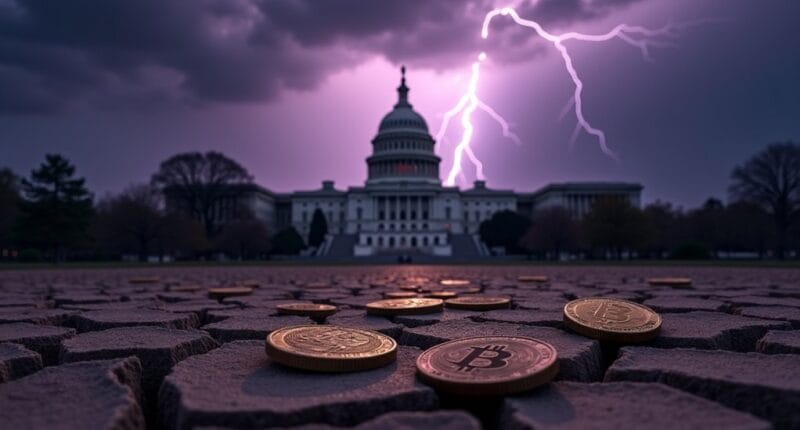Congress’s dueling stablecoin bills are raising eyebrows – and not in a good way. The STABLE Act takes a restrictive stance while the GENIUS Act plays it loose, creating potential regulatory gaps that could shake the financial system. Both bills mandate one-to-one reserve backing, but disagreements over foreign issuers and federal oversight remain unresolved. With Trump’s administration pushing hard for passage before August, these half-baked regulations might just be a recipe for disaster.

While Congress races to regulate stablecoins through two competing bills, the legislative push has nothing to do with preventing financial crises.
Instead, lawmakers are scrambling to establish the first thorough regulatory framework for digital assets in U.S. history, with two distinctly different approaches making their way through Congress.
The House’s STABLE Act, championed by Rep. Bryan Steil and Chairman French Hill, takes a more restrictive approach.
No interest payments allowed on stablecoins – period.
They’re worried about people yanking their money out of traditional banks.
But hey, at least community banks get to play with stablecoin reserve funds.
Like debt securities, stablecoins represent financial obligations that must be carefully regulated.
That’s something, right?
Over in the Senate, they’re getting creative with the GENIUS Act (yes, someone really wanted that acronym to work).
Senator Bill Hagerty’s bill is more flexible, allowing various entities to issue stablecoins as “permitted payment stablecoin issuers.”
Banks, non-banks, whatever – just follow the rules and you’re good to go.
The bill, designated as H.R.2392, is currently making its way through the 119th Congress for the 2025-2026 session.
The Trump administration is all in on this crypto push.
They’ve got David Sacks playing “Crypto and AI Czar” – because apparently, that’s a thing now.
And they’re gunning to get something signed before Congress escapes for their August vacation.
But here’s where it gets messy.
The bills don’t agree on how to handle foreign stablecoin issuers or whether state-regulated entities should answer to the feds when they get too big.
Lawmakers are “getting back to the table” to hash out these differences, but time’s ticking.
Both chambers have shown surprising bipartisan support for their respective bills.
The Senate Banking Committee gave the thumbs up with an 18-6 vote, while the House Financial Services Committee pushed their version through in April.
It’s the first time digital asset bills have made it this far in the new Congress.
Both bills require issuers to maintain one-to-one reserve backing for all outstanding stablecoins.
Now they just need to figure out how to merge these competing visions into something that actually works – without breaking the financial system they’re trying to regulate.





